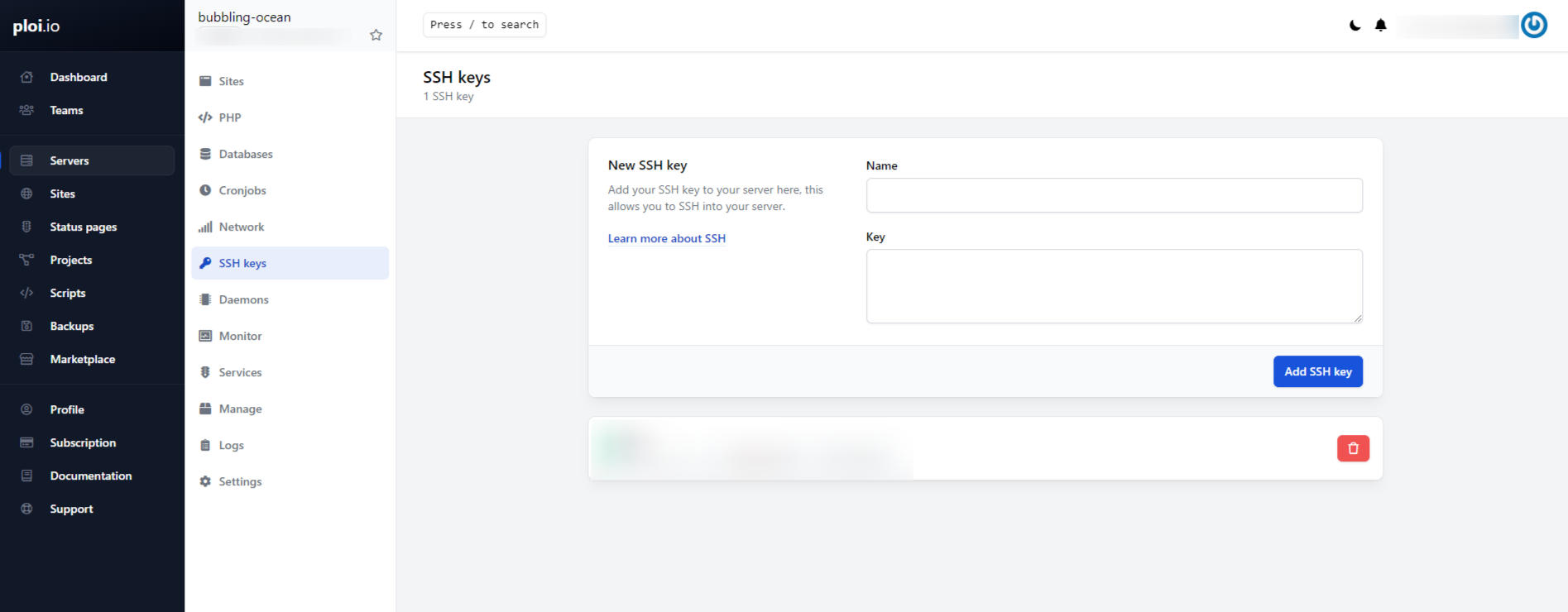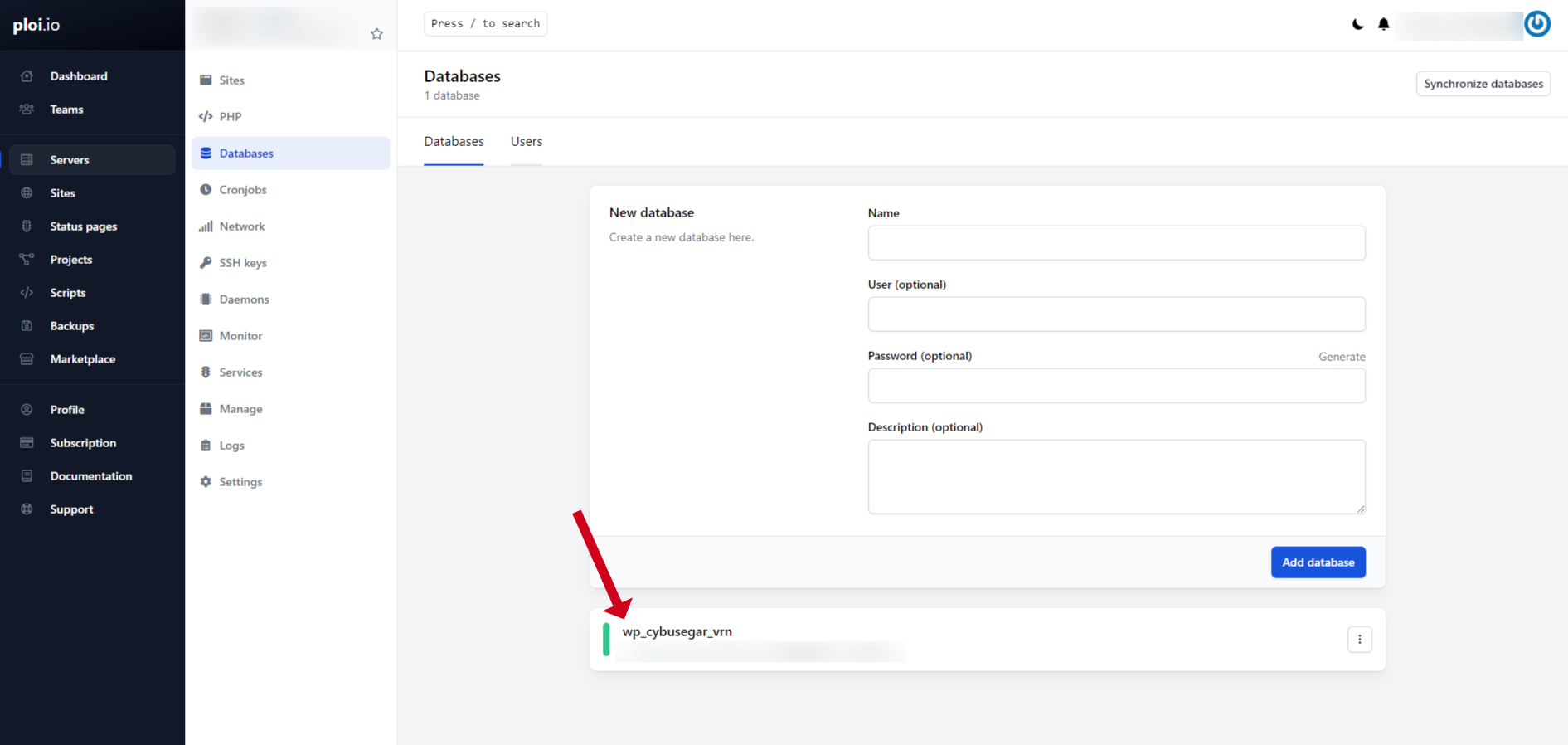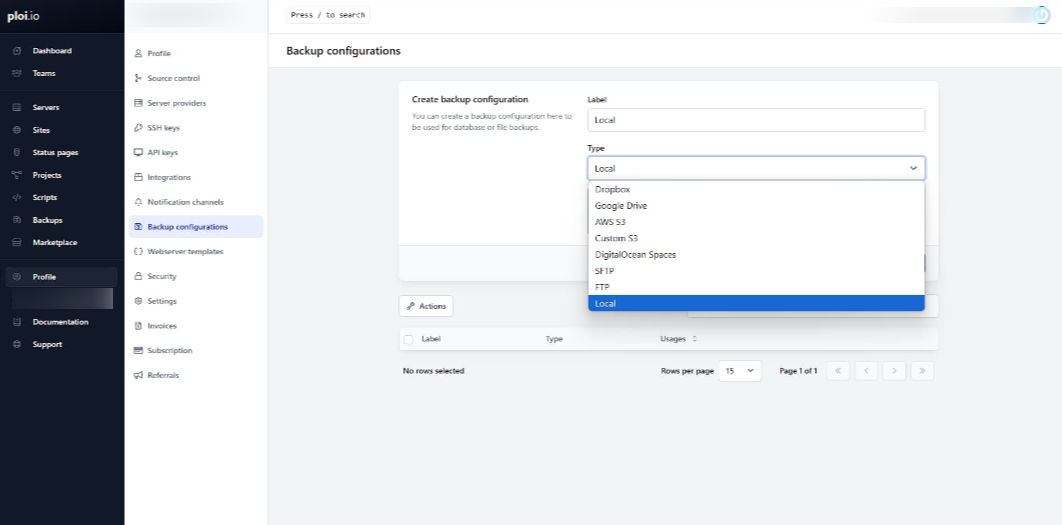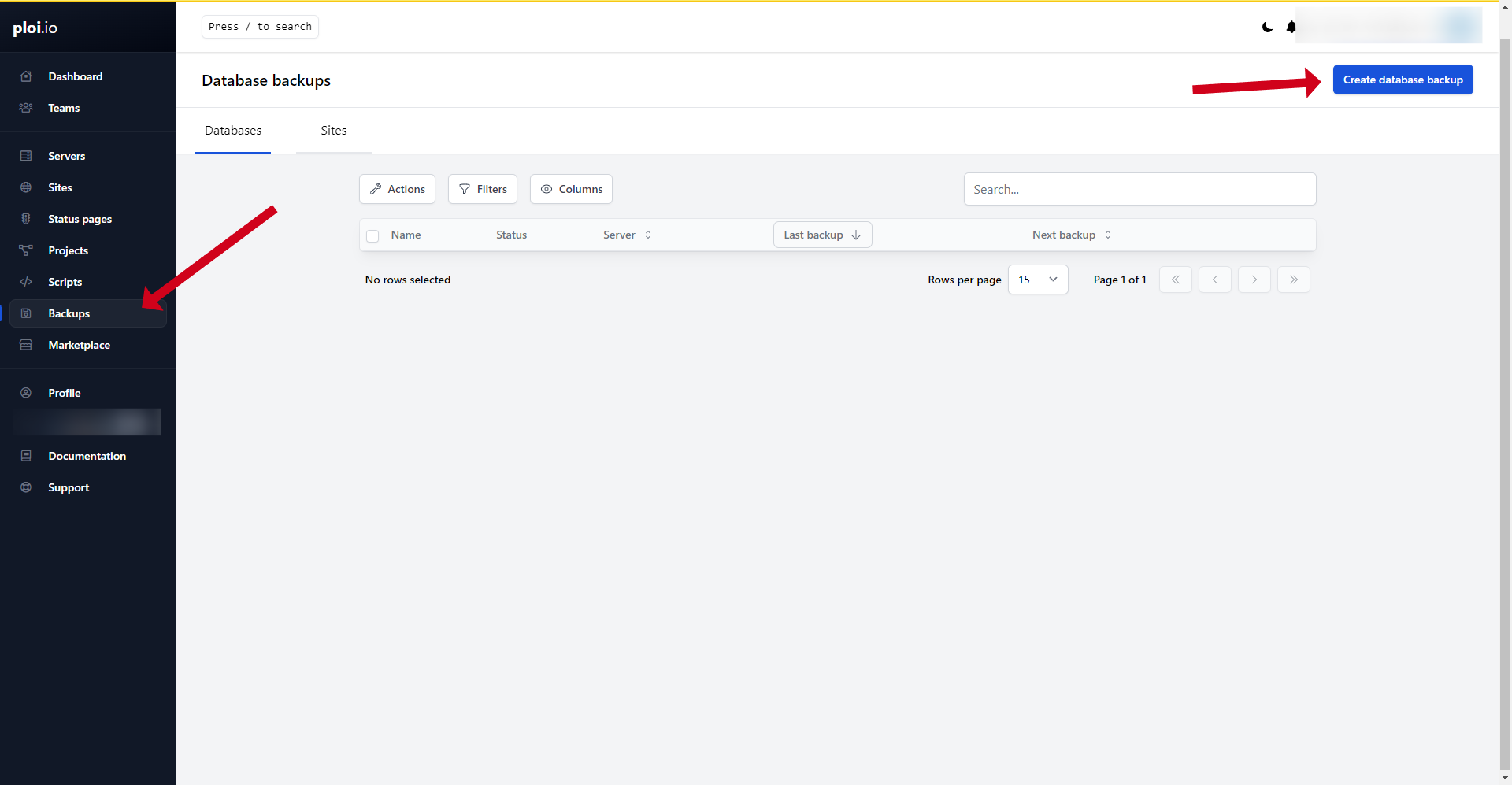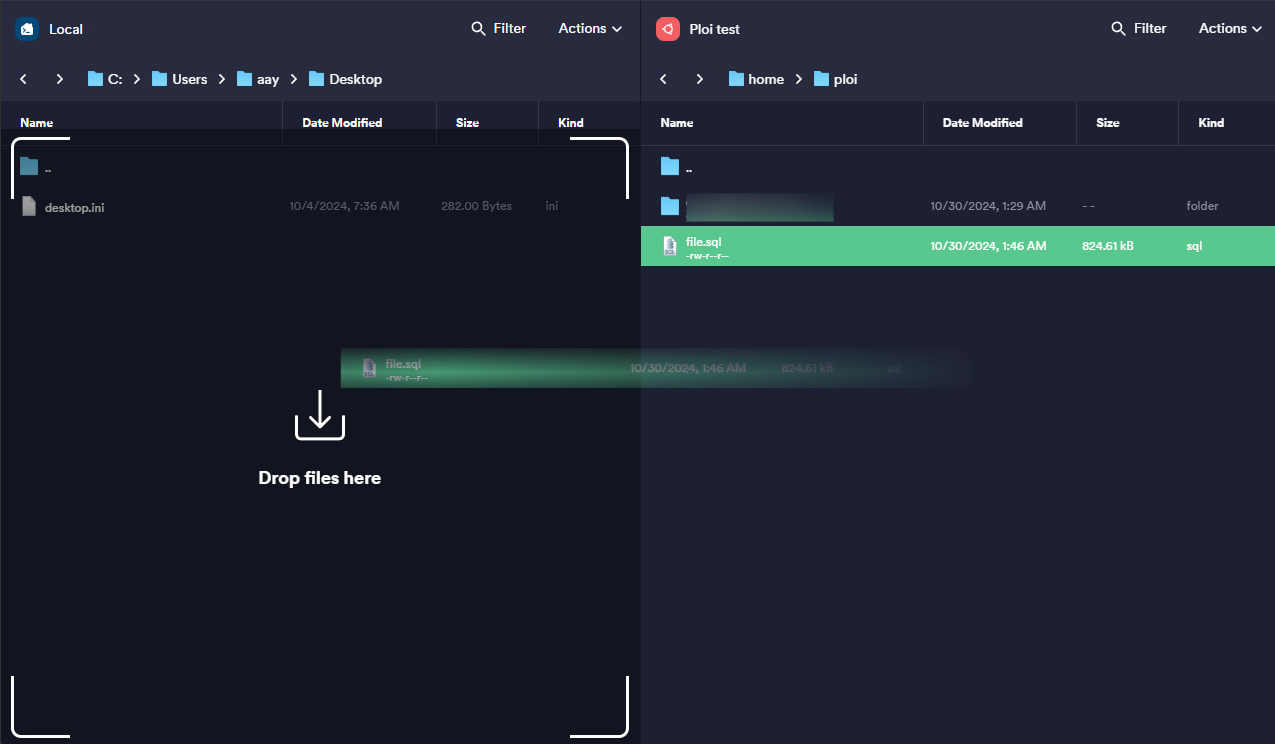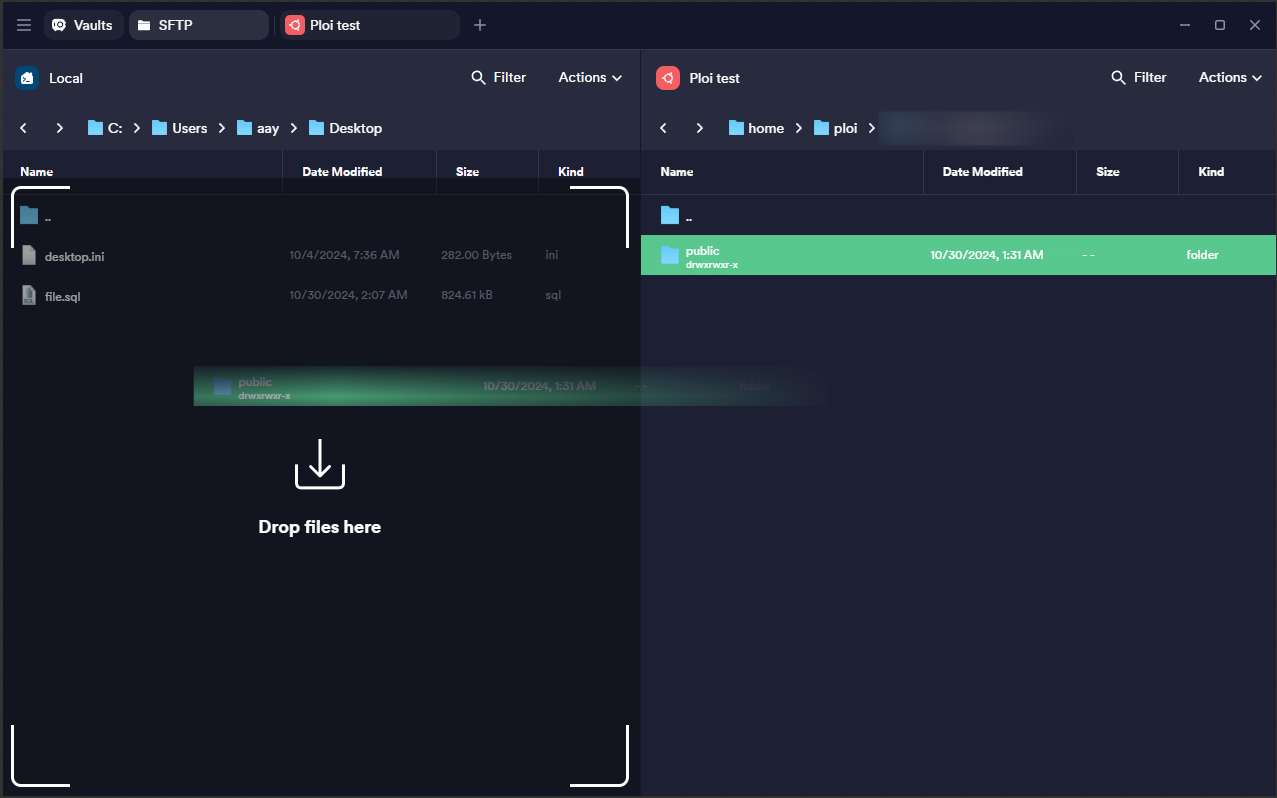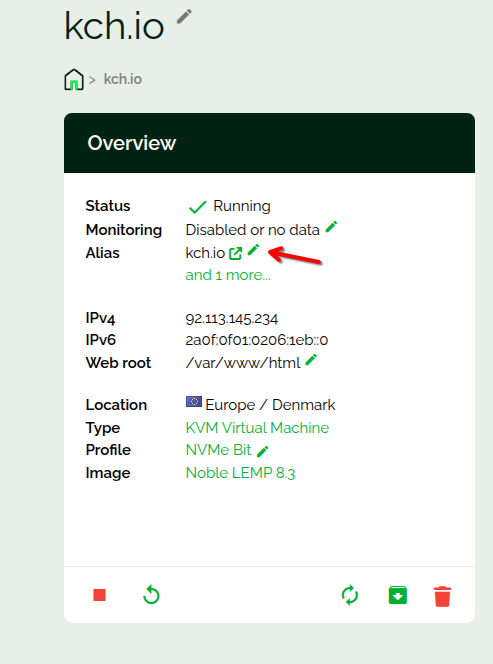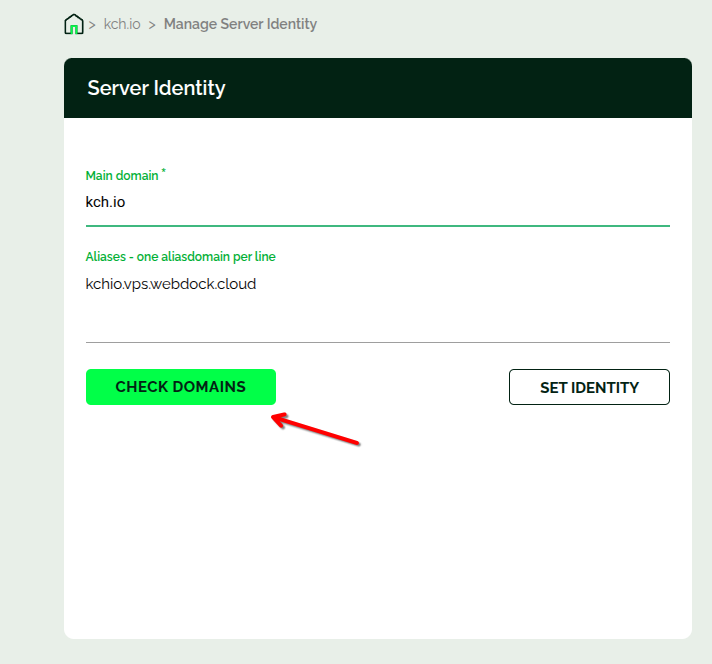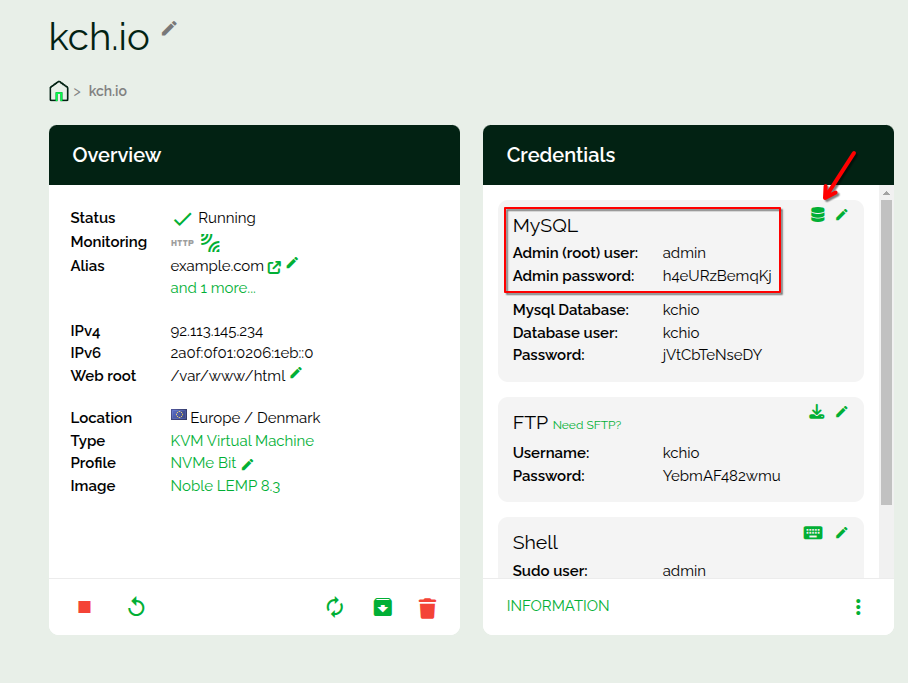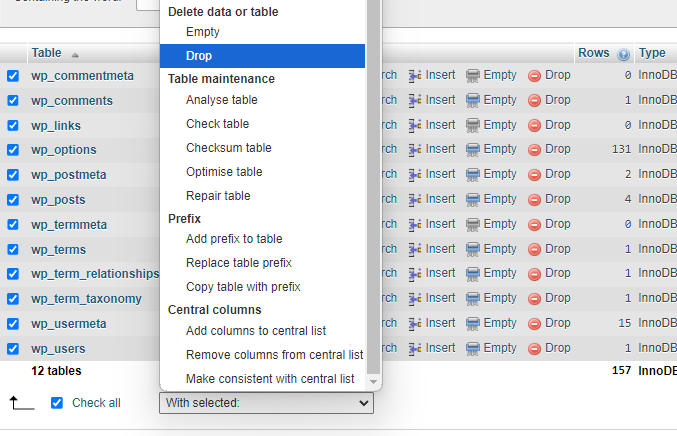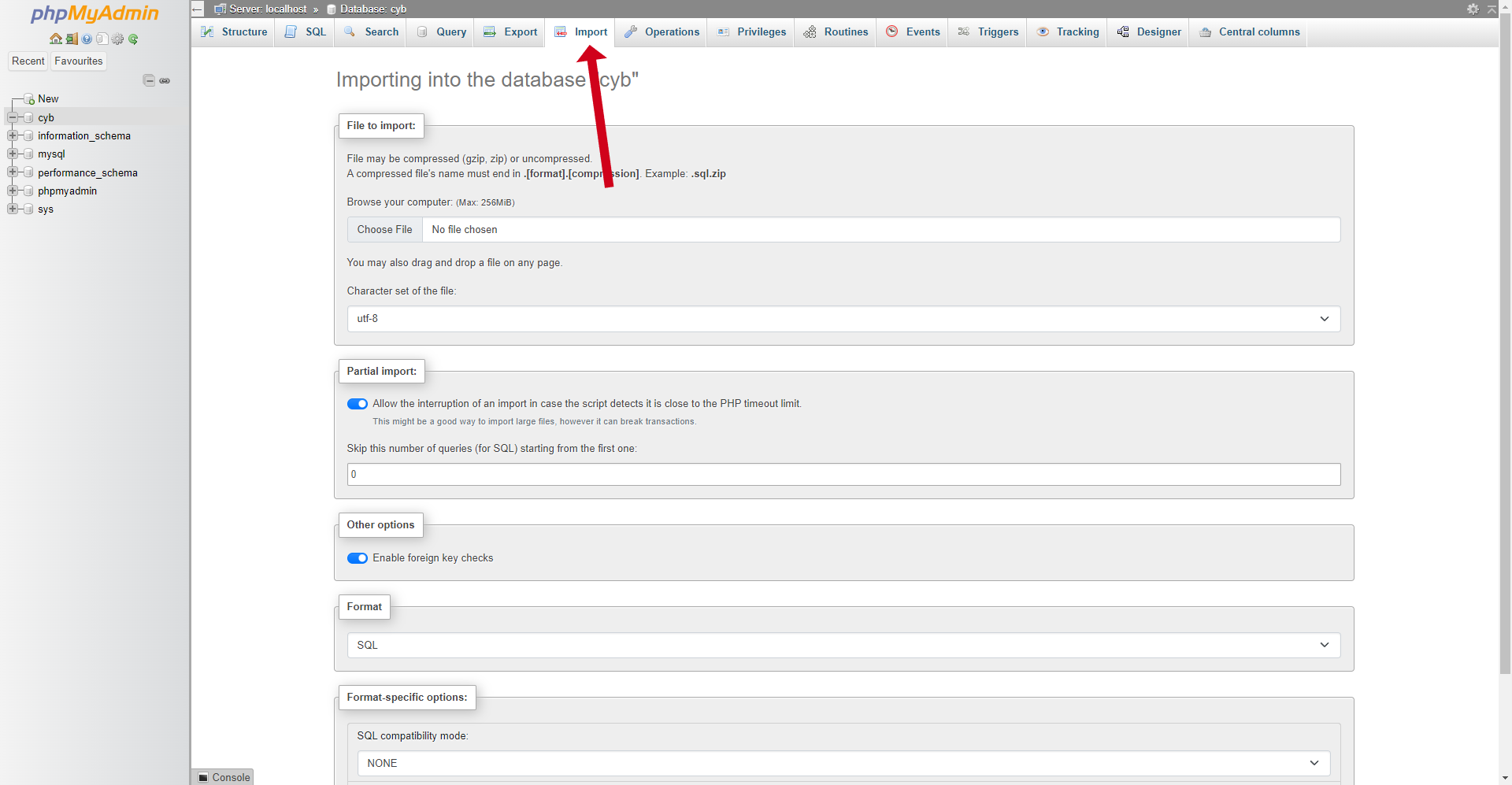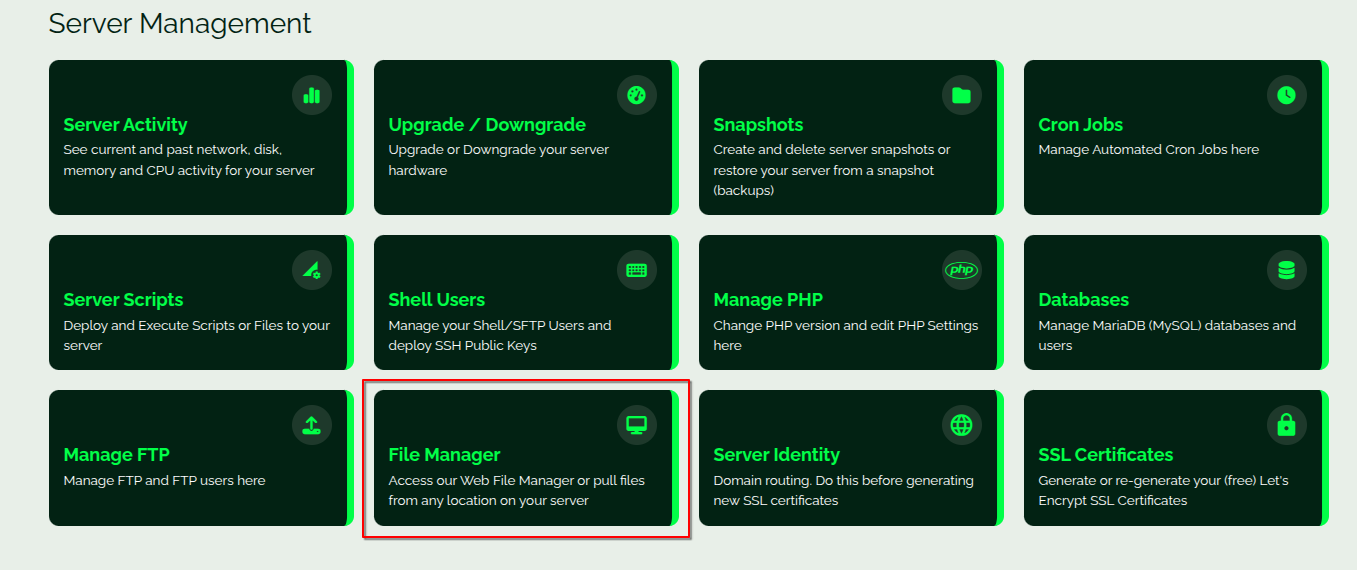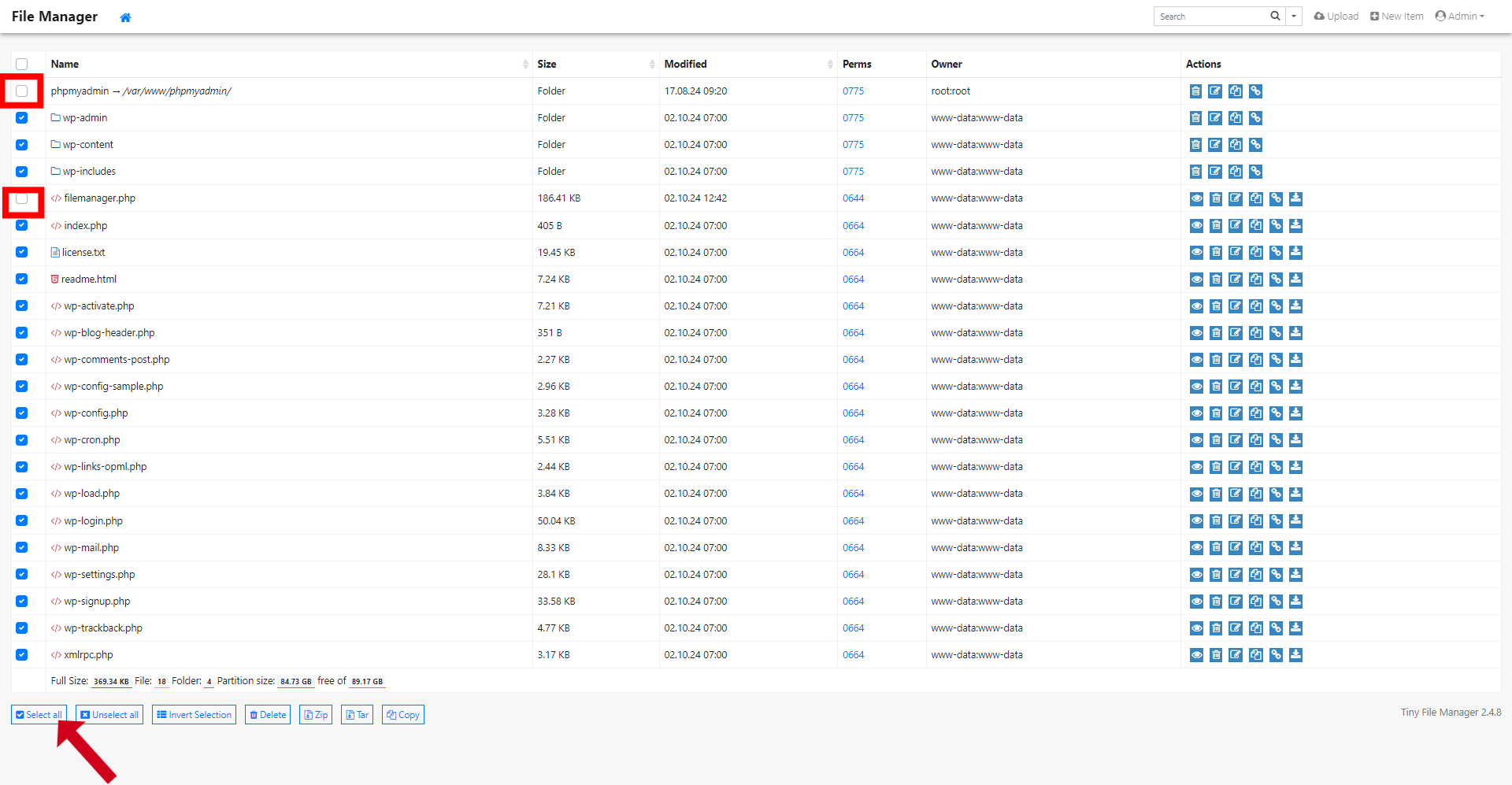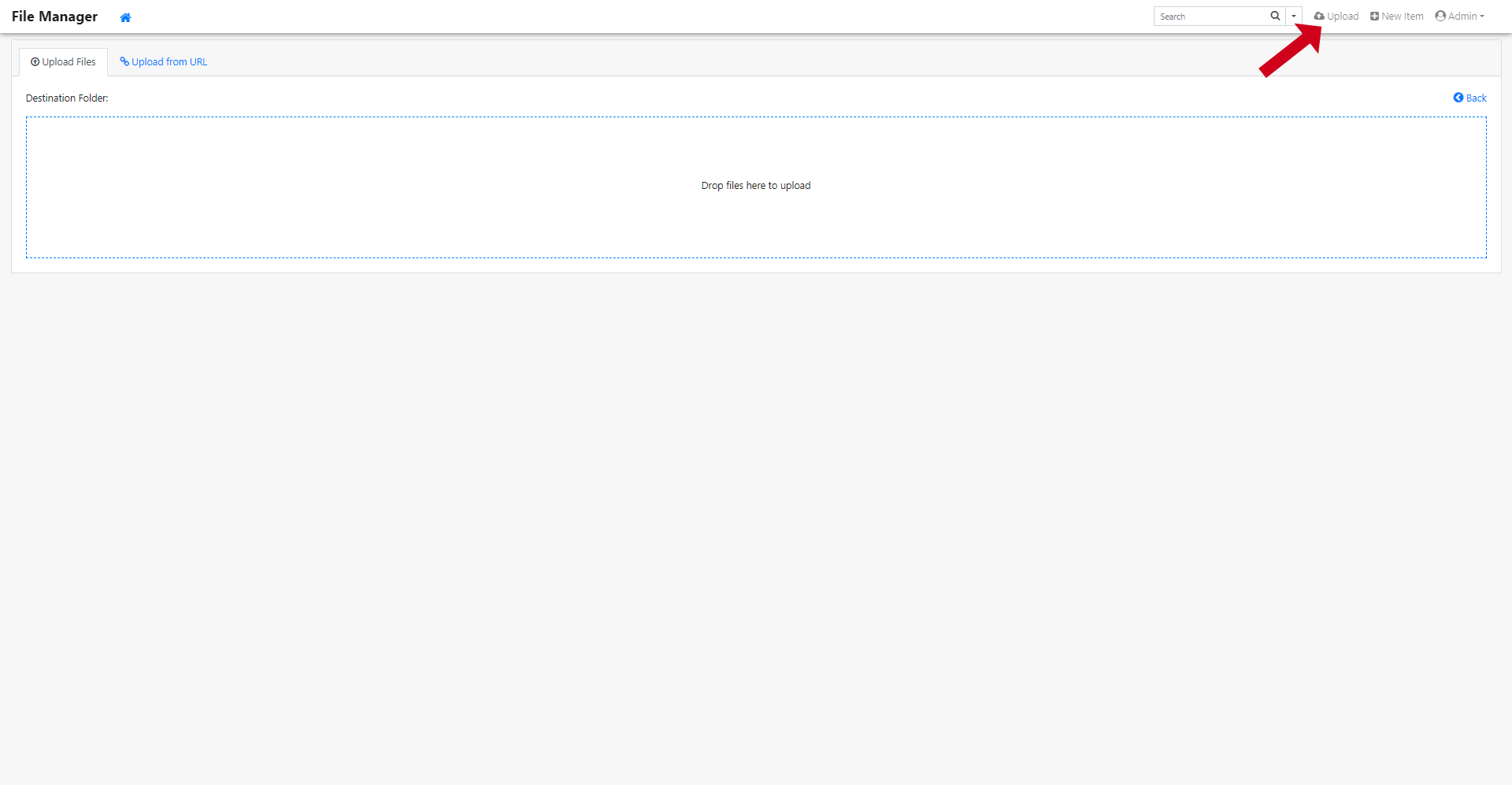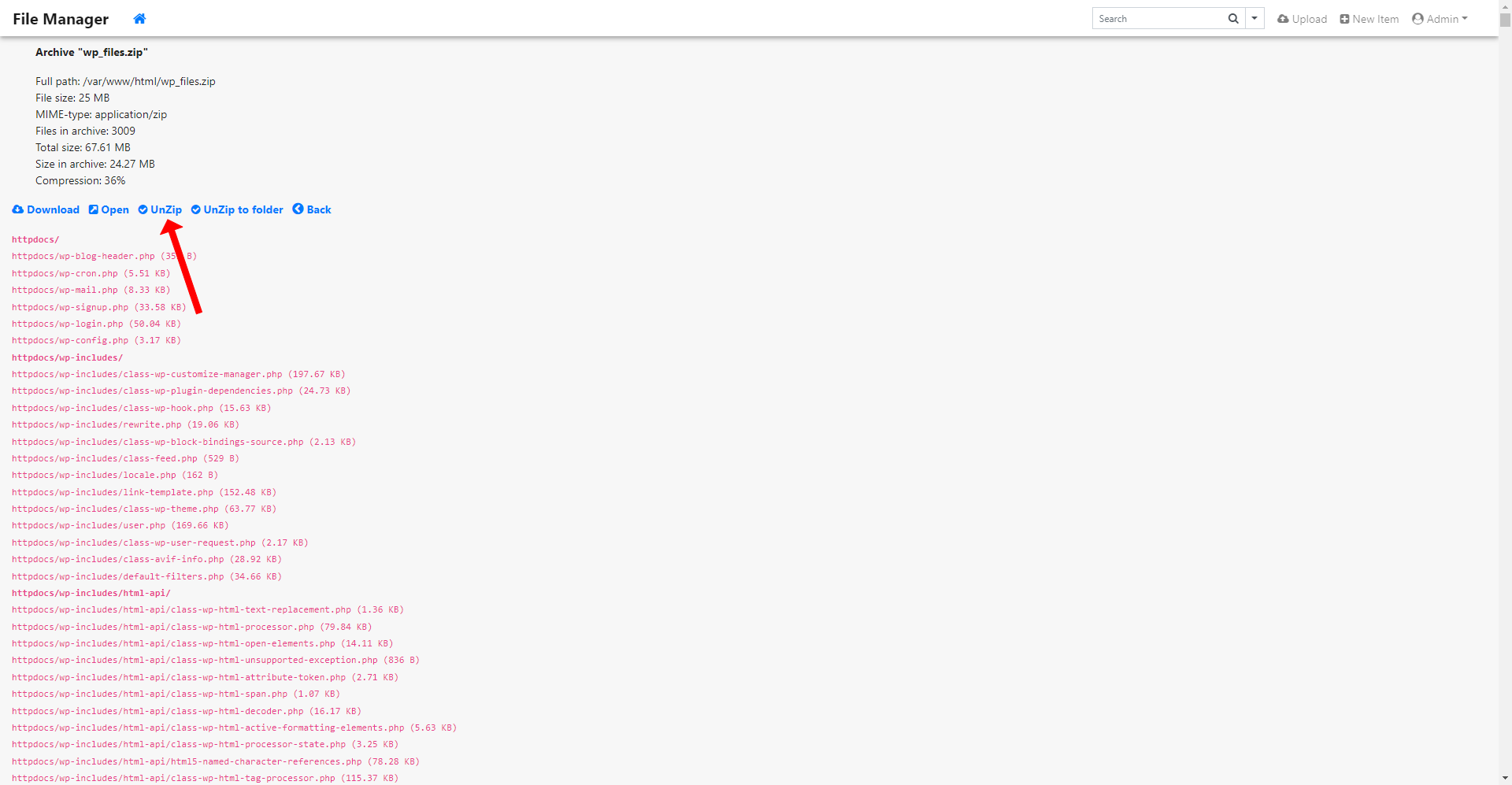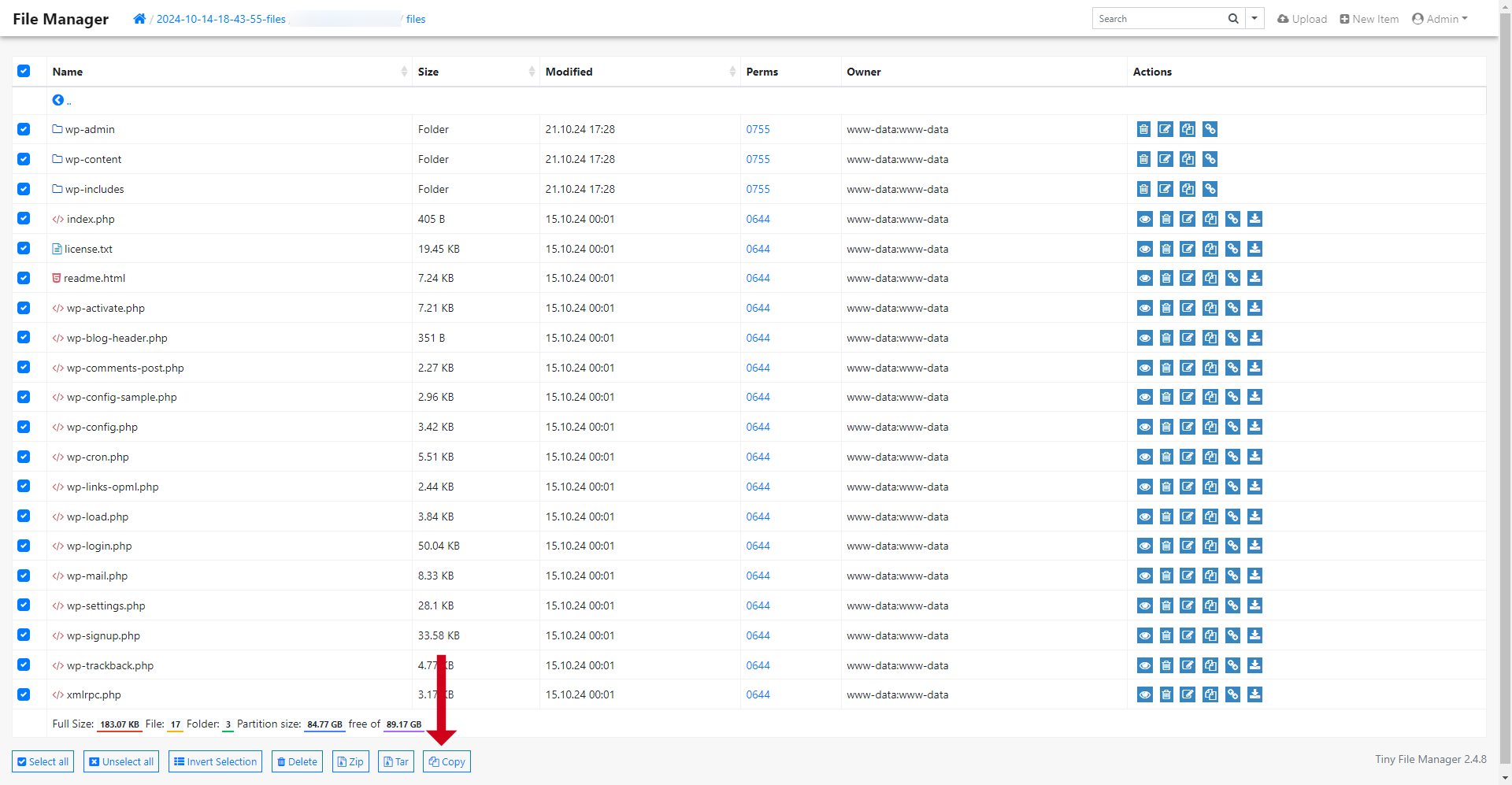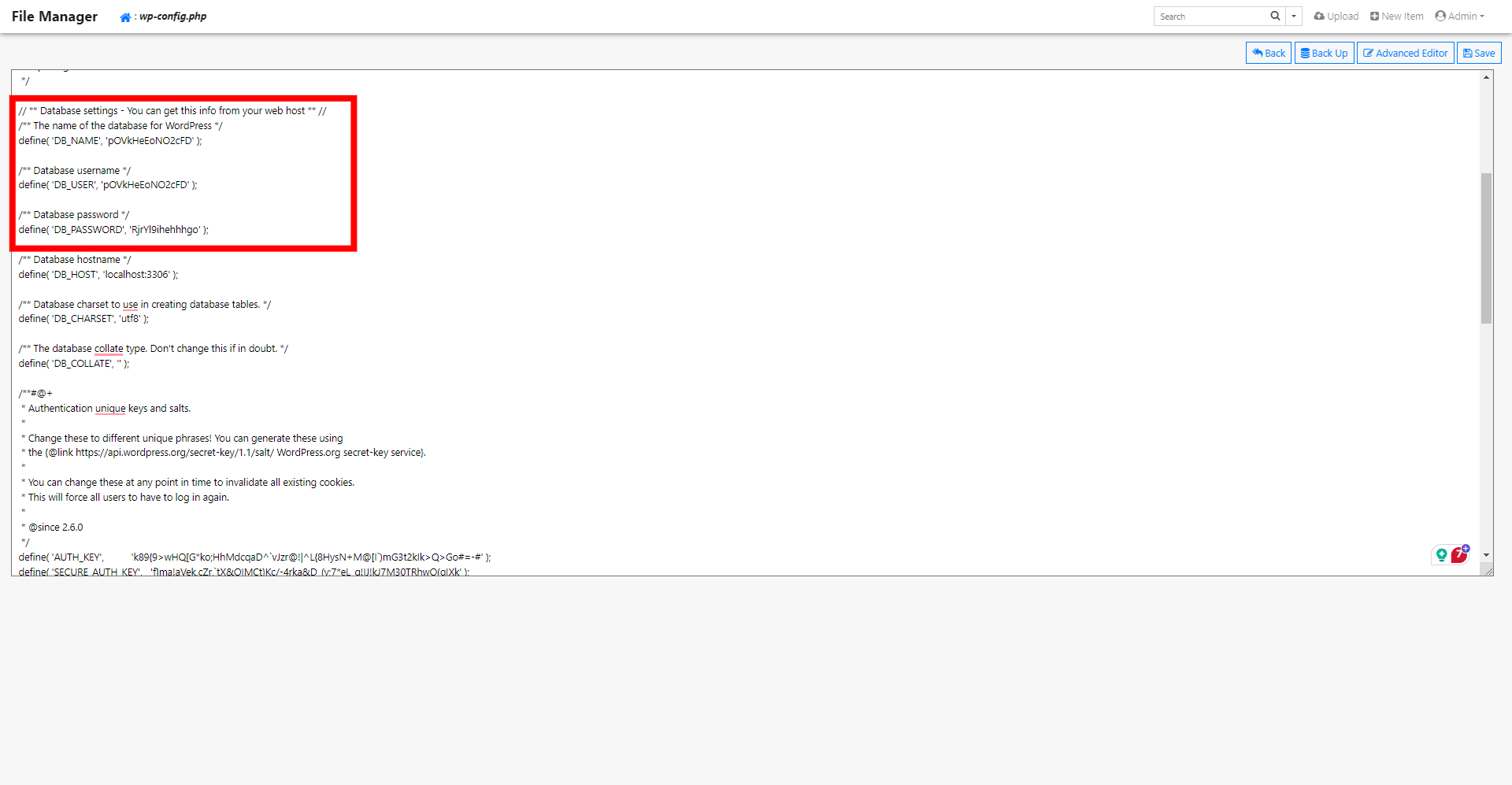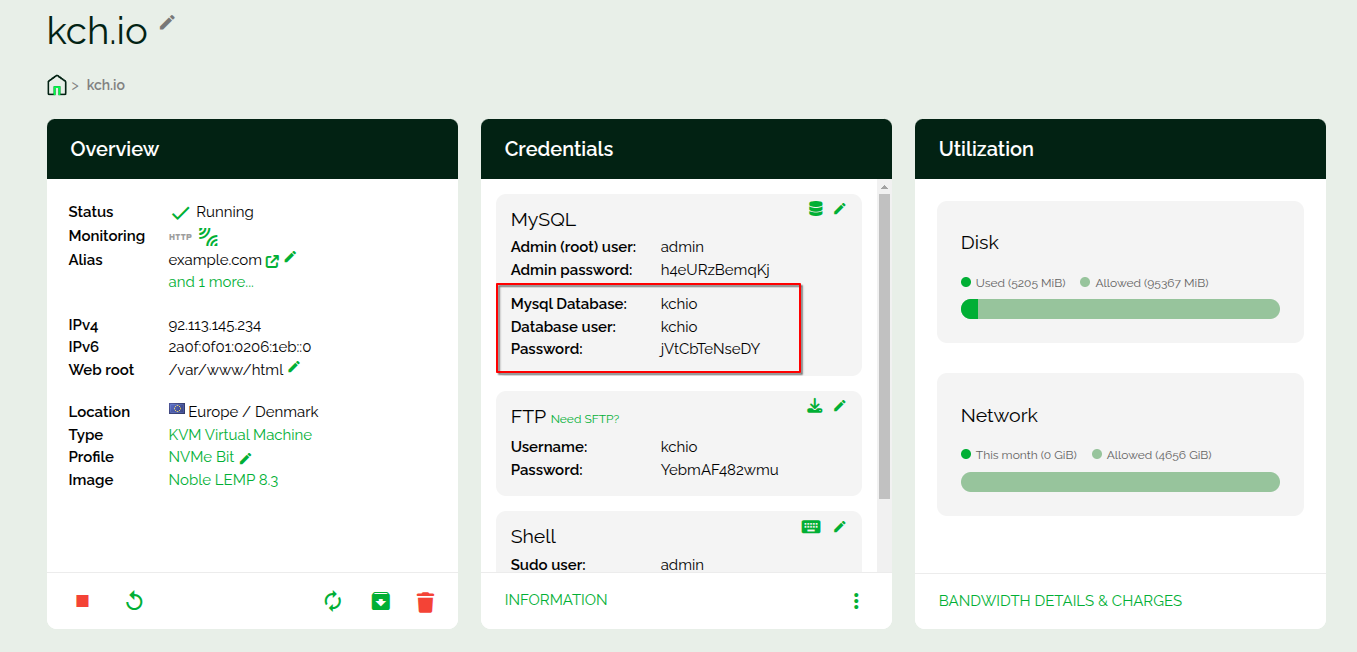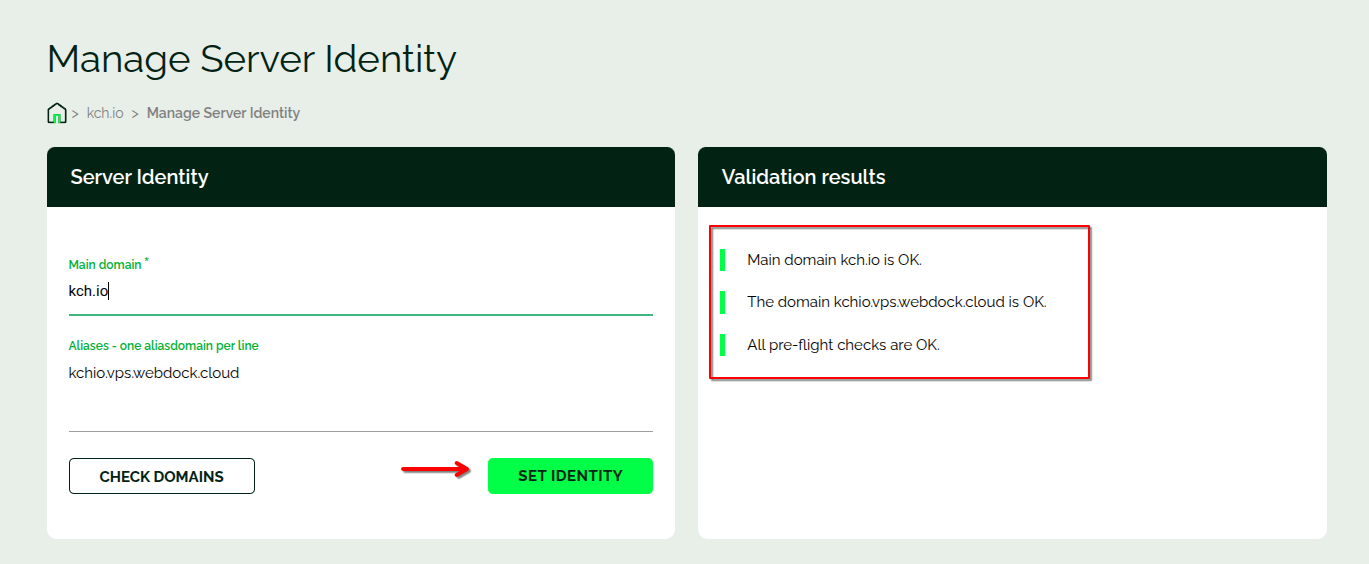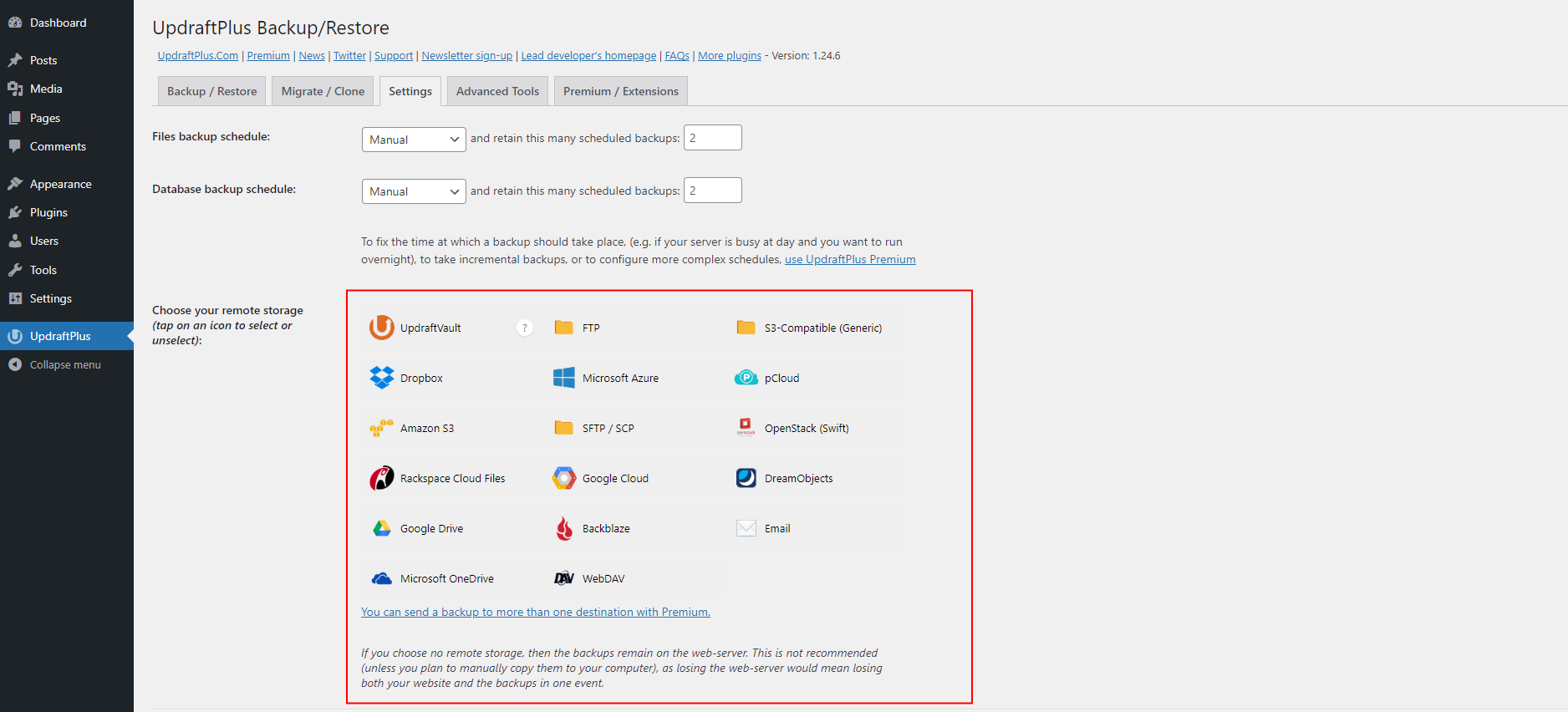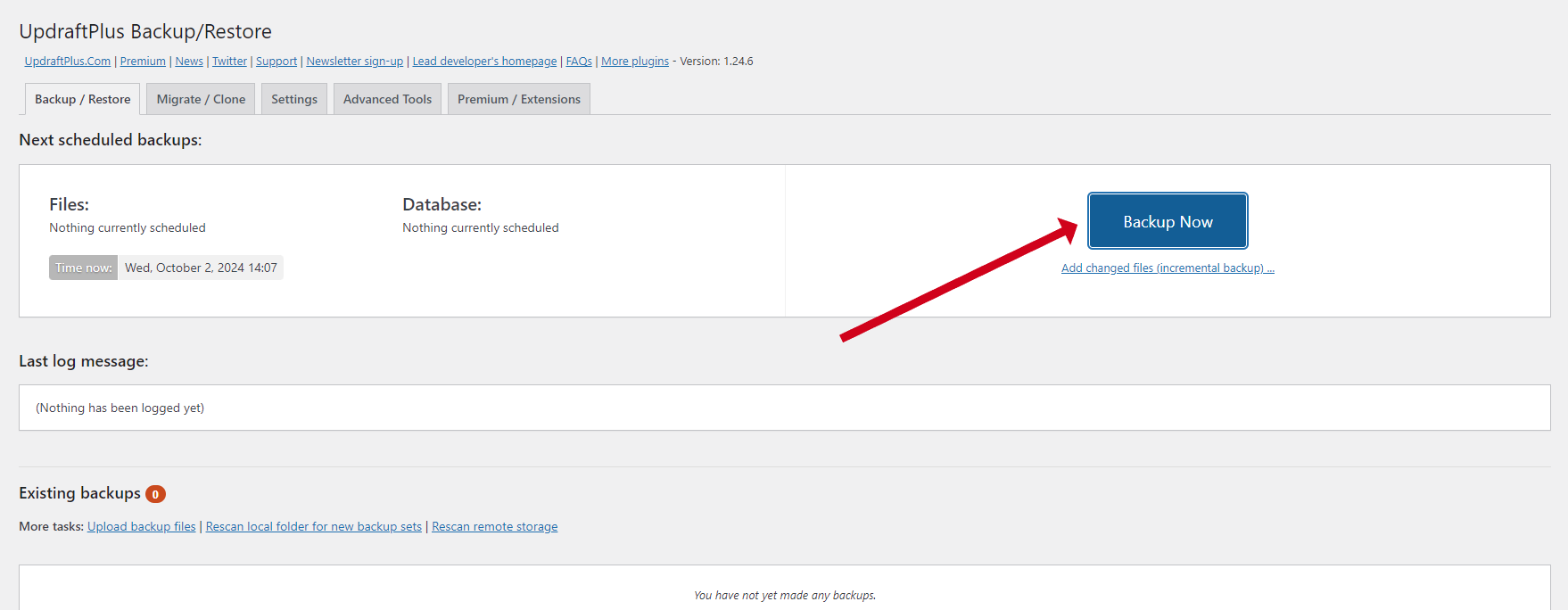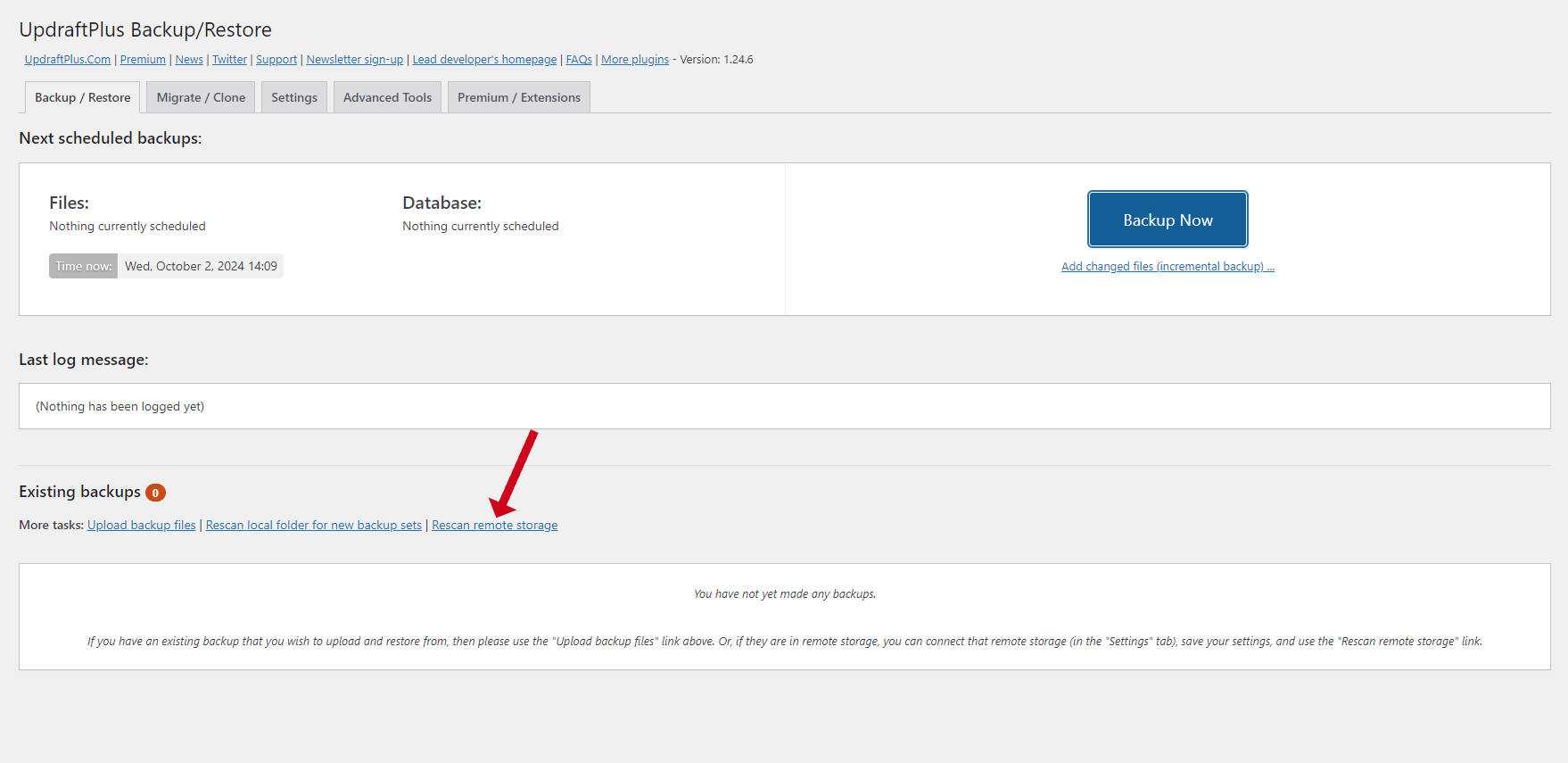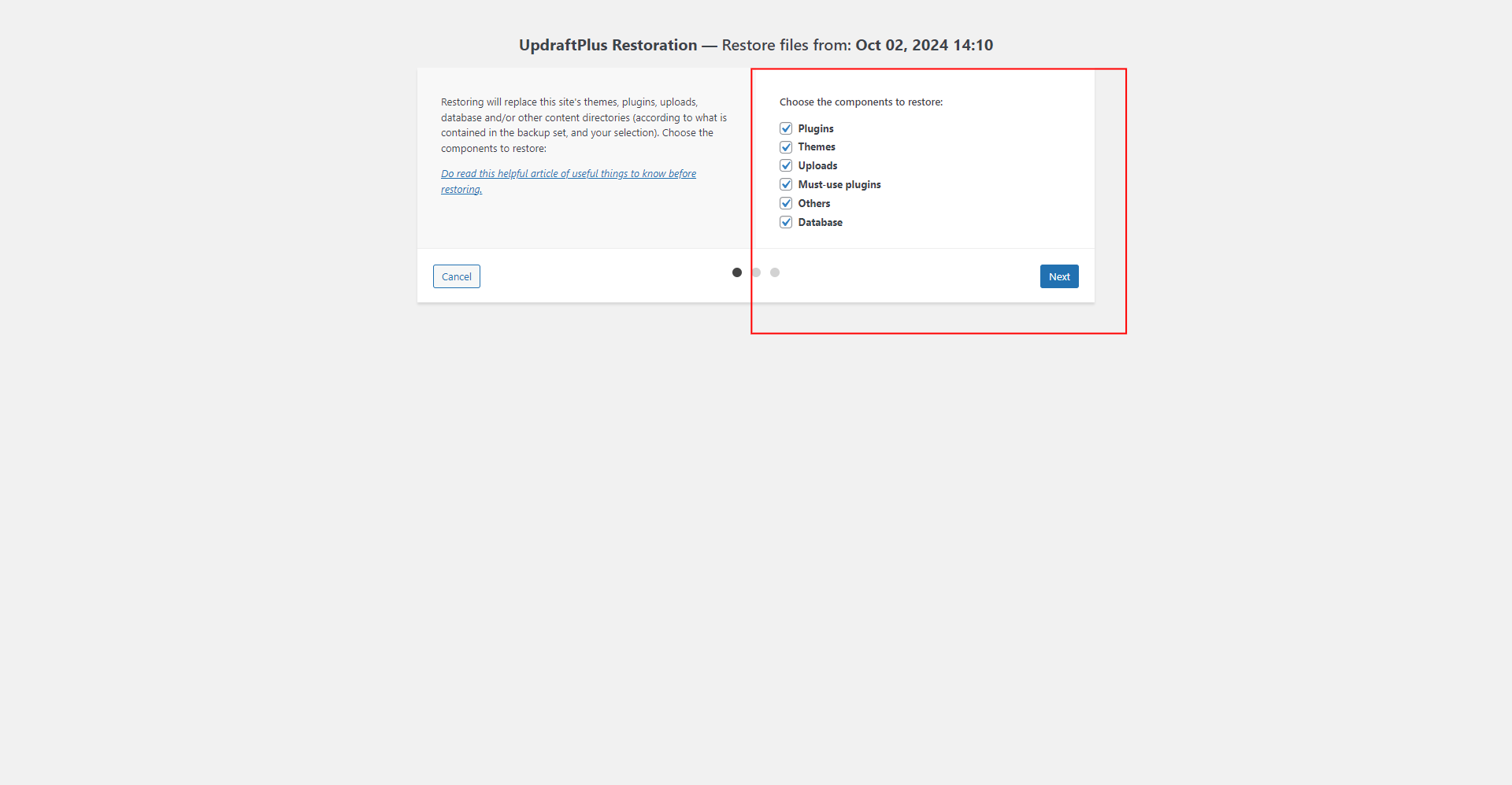Introduction
Are you tired of Ploi.io’s pricing or looking for more server control? Webdock offers a compelling alternative that won’t break the bank.
This practical guide cuts through the fluff to show you the exact migration steps – from cloning your site files to moving them to your new Webdock server and everything in between, such as handling DNS changes and getting an SSL certificate – all while keeping a minimal downtime on your site throughout the transition. Let’s see how.
Webdock Is A Better Choice Because Of…
- Free features: Ploi’s free and paid basic version is bare bones. Even the Pro plan is pretty much incomplete in terms of the price it charges. You don’t get a file manager or monitoring. You can’t even expect to contact the support team if you’re below the Pro plan.Compare this to the free features Webdock includes for you for the servers above €/$5.99: You can enjoy free unlimited transactional emails with Postmark, which is recognized for its excellent deliverability.Additionally, you can access ImprovMX Pro at no cost. If you were to purchase these features separately, it would typically exceed $30 per month. Besides that, all servers, regardless of size, benefit from automated snapshots, with storage included, a clean control panel, monitoring, and support. Webdock doesn’t discriminate!
- No additional costs: Ploi’s basic plan starts at a whopping $10/mo, which has no practical difference from the free plan. You might as well stick to the free plan. The Pro plan costs $16/mo, and the Unlimited, $36 a month. This is on top of your server costs. Yikes! Not at Webdock, though. You only pay for the hardware you choose. And did I mention the power-packed free features you get with Webdock? 😉
- User Interface: Ploi’s user interface looks clean and organized at first. But when you actually get down to finding options, you’ll have to dig through so much. It isn’t intuitive, in my opinion. However, Webdock’s interface may not be flashy, but it is functional and easy to navigate. Everything is well-organized, with all the options placed exactly where you need them.
Preparing Files & Database
The free plan is really restrictive, and you have no way to manage your files or databases, even in the much more expensive Pro plan. So, you must depend on additional software to manage these things.
I am going to use Termius as it comes with a terminal and SFTP browser built-in. Feel free to use your computer’s terminal, PuTTY, and/or FileZilla. The method would be the same regardless.
Before we move forward…
Fortunately, these strategies usually lead to minimal downtime (I’ll also share tips to further reduce it later on). However, just because downtime is low doesn’t mean that all changes made during the migration will be captured.
It’s a good idea to plan your migration during times of low traffic. Consider using tools like WP All Import or WP All Export to transfer any new data that may not have been included in the initial migration.
Another option is to use a maintenance plugin, which allows you to temporarily pause your live site until everything has been successfully moved to Webdock.
First, if you haven’t yet, go to Servers > SSH keys to assign a public key to your server. Give it a friendly name for easy reference.
I won’t delve into how to generate SSH keys. You can use PuTTY keygen or websites online to generate them. Just remember to keep the private keys safe and save them on your machine.
Now, access your server’s terminal using your preferred method using the user ‘ploi’ and the private key for the public key you just assigned. When prompted for a password, enter your sudo password. This password is usually sent to your email when you set up the server.
Once in, enter the following command:
$ mysqldump -u ploi -p database_name > file.sql
Make sure to replace database_name with the name of your actual database. You can find the database name in Servers > Databases.
When running this command, you will be prompted to add a password. The password can be found on the same email you had the sudo password. If successful, you’ll see no response.
This command will create a dump (backup) of a MySQL database and save it in the /ploi/ folder.
If you’re on a Pro/Unlimited plan, you can skip the steps above and create a backup to retrieve your website and database files. If you haven’t set up a backup destination locally, go to Profile > Backup Configuration and create a new configuration with Local set as the destination.
You can, of course, set up an external storage service, but if your site’s size it massive, it will take a lot of time for the backup to be created, uploaded to the storage server, and then downloaded to your machine, so I recommend keeping it as local.
Then go to Backups, and click on Create Database Backup.
Select the server, the configuration we just made, and the database. Remember to set the path of the backup to /home/ploi or the backup will fail.
Likewise, go to Sites and create a backup for your site. Set the path as above.
Unless you’re on the Unlimited plan, you won’t have a file manager to download the files from (which will be in /home/ploi/). So, we’ll have to connect using SFTP. Again, I won’t go into much detail. Googling will easily find how to connect using SFTP along with the private key with the ‘ploi’ user. One of the reasons I prefer using Termius is that I don’t have to jump around.
Once you figure out and access your website files, you will be logged in to the /ploi/ folder by default. Here, you will find two important things. A database backup and the folder for your
website. Or, if you created a backup, two zip folders named after your database, followed by the date and time, as well as your domain, also followed by the date and time.
Copy the database or the DB zip file to your machine.
Similarly, open the file file named after your website’s folder and then copy the folder to your machine. Or the zip folder of the backup created.
Now, convert this folder into a zip file and get it ready with the database dump. Depending on your SFTP software, you can copy and turn the folder into a zip first and then move it to your machine. If you have this option available, that would be a time saver.
If you downloaded the backup zip, you would have to extract the folder, open the folder named ‘home,’ then a folder called ‘ploi,’ then a folder named after the domain, and then copy and create the zip folder of the ‘public’ folder.
This will ensure that everything is organized and prepared for the upcoming stages of your migration process.
Setting Up WordPress On Webdock Server
Go to Webdock and set up a server starting at €/$5.99 or higher. You have the option to select either Apache or NGINX for your server software, and I suggest going with NGINX.
After your server is ready, head over to its dashboard on Webdock. Find the small pencil icon next to the Alias field in the Overview tab and click on it.
In the main domain column, enter your website’s primary domain and click on Set Identity. Normally, you’d check the domain before setting the identity, but to minimize downtime, just set your website’s domain directly as the primary one.
The setup process should take about 3-4 minutes. You might see an error message during this time, but you can safely ignore it for now.
Once you’re back on your server’s overview page, scroll down to find the Manage WordPress section.
You will need to install WP-CLI on your server. Click the button provided to initiate the installation. After WP-CLI is successfully set up, click the Install WordPress Now button. A form will appear with fields for admin email, domain, path, database, and more. In most cases, the default settings will work just fine.
You won’t be able to create an admin password manually, as Webdock generates one for you automatically.
Moving Over The Database
Once you have installed WordPress, access phpMyAdmin by clicking the small database icon in the credentials tab.
When prompted, enter your Admin username and password.
Find your WordPress site’s database and select all the tables within it, then proceed to drop (or delete) them.
After that, head over to the import tab. You can either drag and drop the .sql or .zip file you downloaded from the Ploi server or manually select it from your computer. This SQL file will fill your database with the necessary information.
Next, locate the “wp_options” table and check that both the siteurl and home option_names are set to the https:// version of your website’s URL.
Moving Over Files
After successfully importing and verifying your database, the next step is to install the File Manager from the overview section and log into it.
Once inside the File Manager, use the option to select all files, but uncheck the PHPMyAdmin folder and the filemanager.php file to exclude them. After making your selections, go ahead and delete the remaining files.
Next, look for the upload button in the top right corner of the File Manager interface and click on it.
You will upload the website files zip that you previously downloaded from your Ploi server. You can drag and drop the file into the upload area or manually select it from your computer. Once the upload finishes, find the zip folder we created, click on it, and choose the option to unzip it.
After unzipping, open the newly created folder, go into the files section, select all its contents, and click the copy button.
Check the “Move” box in the next window while leaving the path field empty. This will move your files to the main directory.
Finally, you can safely delete both the original zip file and the unzipped folder to keep your directory neat and organized.
Final Steps
Open the wp-config.php file and find the section that contains the database information.
Update this section with the current details from your server overview.
Once you’ve made the necessary changes, save the file.
After you’ve completed all your file-related tasks, it’s a good idea to disable and remove the File Manager. Although it is password-protected, it can still pose a security risk. You can quickly delete the File Manager using the button in the same area where you initially enabled it.
Next, update your domain’s DNS settings to direct it to your Webdock VPS IP address using an A or CNAME record.
As mentioned earlier, return to your server overview, find the Alias section, and click the check domain button. If everything looks good in the validation section, set the domain.
This will also trigger the regeneration of your site’s SSL certificates. That’s it—your WordPress website is now live on Webdock from Ploi with minimal downtime.
Alternative Approach: Utilizing a Plugin
Opting for the previously discussed approach is free and usually dependable. However, managing it can become a hassle if your website is extensive, your internet connection is slow, or you’re not particularly tech-savvy. Using a backup plugin can make moving your site to Webdock much easier in these situations.
Regarding backup and migration tools, I consistently rely on UpdraftPlus. It might have minor flaws, but it effectively gets the job done. The great news is that most of its key features are free, so you won’t have to spend a dime. Another solid choice is Duplicator.
If you already trust a backup plugin, feel free to stick with it. The general process is similar across different plugins. Plus, it’s helpful to have access to some type of cloud storage.
You can use any cloud storage service, including the free version of Google Drive. While cloud storage isn’t essential, it can significantly speed up migration. If you prefer not to use a storage service, don’t worry. I’ll guide you through the steps without it. Remember that if your internet connection is slow, doing it without cloud storage might take nearly as long as the manual method mentioned earlier.
To begin, log into your WordPress dashboard. Navigate to the “Plugins” section and click “Add New.” In the search bar, enter “UpdraftPlus” and find the UpdraftPlus WordPress Backup Plugin. Click “Install Now,” once it’s installed, activate the plugin.
After activation, you can take the introductory tour or skip it if you don’t plan to use the plugin further or if it doesn’t suit your needs.
Next, go to the UpdraftPlus option in the menu to access the plugin’s settings. Scroll to the “Choose your remote storage” section, pick your preferred cloud storage option, and follow the setup steps. If you decide not to use remote storage, simply move past this step.
After setting things up, navigate to the Backup/Restore tab. Hit the “Backup Now” button prominently displayed, ensure all the checkboxes are ticked, and then click “Backup Now” again to start backing up your site.
Wait for the backup process to finish. If you opted out of using remote storage, scroll down to locate your new backup. Click on each part of the backup individually to download the zip files and save them securely.
Next, choose a server plan that costs at least €/$5.99 or more. Adjust your profile settings to match this price point and deploy your server on Webdock.
You have a couple of options for proceeding: You can connect your domain directly to your server’s IP address immediately, which is straightforward but may result in users seeing an empty website initially. Alternatively, you can modify your computer’s host file; I’ll explain how this works shortly.
Once you’re in the server identity tab, set up your domain after confirming that DNS has propagated correctly. Then, go through all the steps outlined earlier to install WordPress.
With WordPress installed, log into your dashboard and install UpdraftPlus or any other backup plugin you prefer. Re-establish the connection with your storage solution.
Go over to the Backup/Restore section once more. In the “Existing Backups” area, if you see a message indicating no backups have been made yet, simply hit the Rescan Remote Storage button. UpdraftPlus will then search for any backups available and list them for you.
If you’re not using remote storage, you can manually upload your backup files by choosing the upload option and dragging them into the specified area instead of seeing a message about no existing backups.
Once your backup from the Ploi site is visible, this message will disappear. Click on the Restore button to begin the restoration process.
Be sure to check all options under Choose the Components to Restore, then click Next. The plugin will automatically download the necessary files if you’re utilizing remote storage.
After all files have been downloaded, click Next again and wait for everything to finish. That’s it! Your WordPress site has been successfully moved from Ploi to Webdock. Review everything carefully to ensure it’s working as expected.
Transitioning Without Showing a “Blank Site”
To prevent your site from appearing blank during the migration, you can add a maintenance plugin to your WordPress site on Webdock. This will let your visitors know that the site is currently undergoing maintenance. The WordPress plugin repository offers various free options.
If you’re comfortable with technical tasks, another approach is to wait until the migration is fully completed before making any changes to your DNS records.
When you set your domain as the server identity, just type in your domain directly instead of clicking the Check Domains button. You might get an error message, but moving forward is fine.
Next, you need to find your server’s IP address in your Webdock dashboard and then open your computer’s host file:
- On Windows: Look for Notepad, right-click it, and choose “Run as Administrator.” Then, use CTRL + O to open the file and go to c:WindowsSystem32Driversetchosts.
- On Mac: Open Terminal and type sudo nano /private/etc/hosts (for older Macs) or sudo nano /etc/hosts (for newer models).
- On Linux: Open a terminal and enter sudo nano /etc/hosts, then hit enter and log in.
Once the host file is open, scroll down to the end and add your Webdock server’s IP address.
Be sure to add a space after the IP and list both the www and non-www versions of your domain on separate lines like this:
123.456.789 example.com
123.456.789 www.example.com
After saving your changes in the host file, exit the editor. You may need to clear the DNS cache to help your computer quickly recognize your domain with the Webdock server.
Here’s how you can do that:
- For Windows: Open Command Prompt as an administrator and type ipconfig /flushdns.
- For Mac: Launch Terminal and enter sudo dscacheutil -flushcache.
- For Linux: Open Terminal and type systemd-resolve –flush-caches.
Now, you can try installing WordPress using Webdock’s WordPress manager. If you visit your website’s URL at this point, you should see a blank WordPress site—this will only be visible on your computer. Follow the steps shown above to move your site.
Once you’ve confirmed that everything is functioning as expected, remember to update your DNS records after everything is set up. Click on Set Identity again to create a new SSL certificate, remove any recent entries from your host file, and clear your computer’s DNS cache again.
Conclusion
Moving from Ploi to Webdock isn’t just about saving money – though you’ll definitely keep more cash in your pocket. You’re getting a better deal with included features like transactional emails, automated snapshots, and proper monitoring, all while enjoying a cleaner, more intuitive interface.
Whether you went with the manual method or chose the plugin route, you’ve now got your site running on a platform that doesn’t nickel-and-dime you for essential features.
Your site should be running smoothly on Webdock’s infrastructure, complete with SSL certificates, proper DNS configuration, and all your files and databases intact. The best part? You’re no longer paying extra for features that should come standard.
Now, you can focus on what matters – running and growing your website – instead of worrying about server management or surprise add-on costs. Welcome to a better hosting experience!
Meet Aayush , a WordPress website designer with almost a decade of experience who crafts visually appealing websites and has a knack for writing engaging technology blogs. In his spare time, he enjoys illuminating the minds around him.
